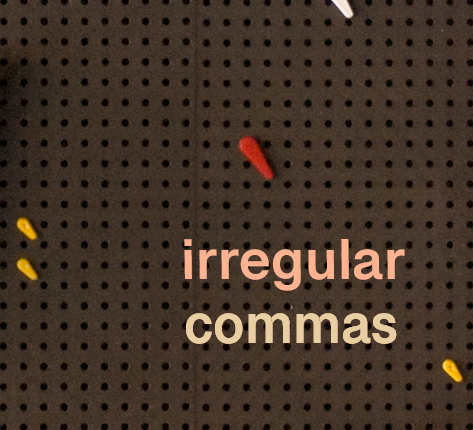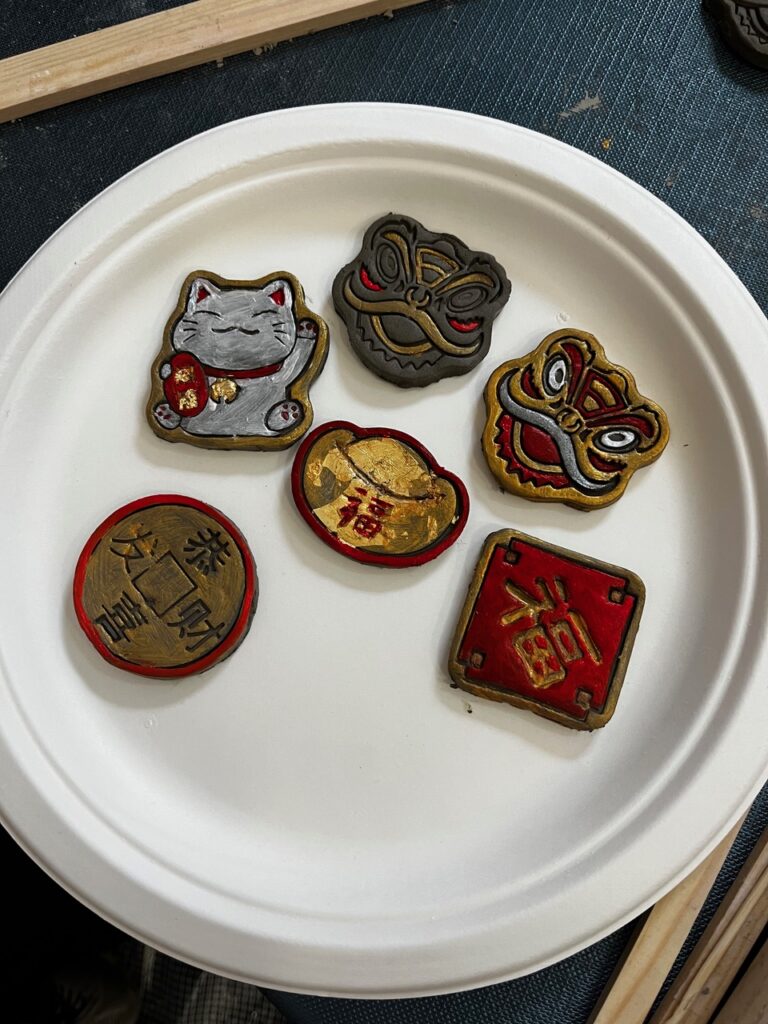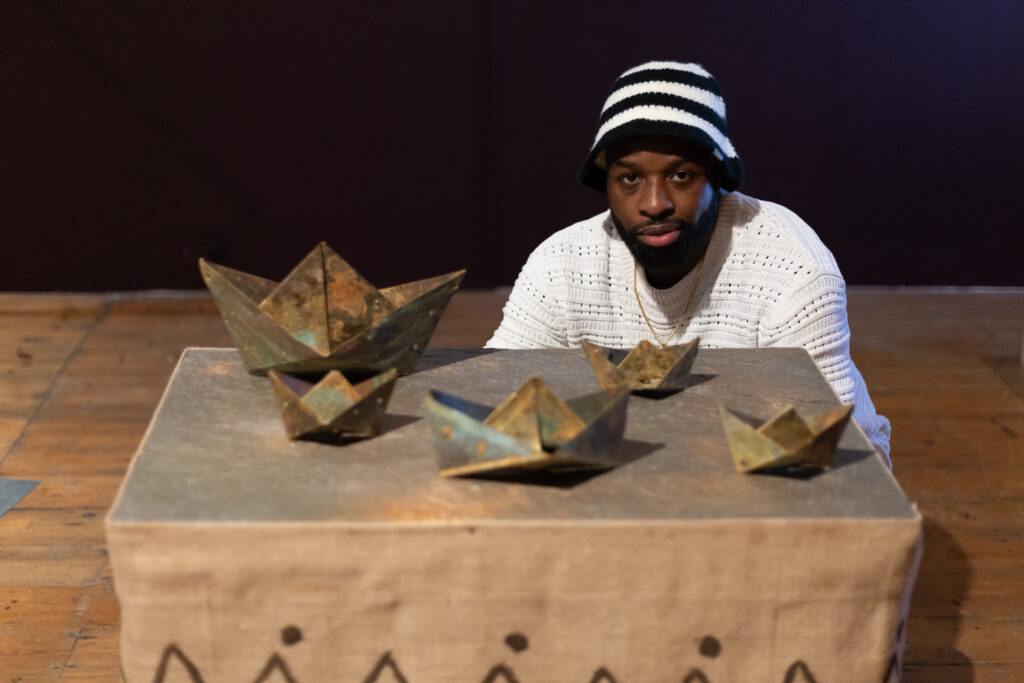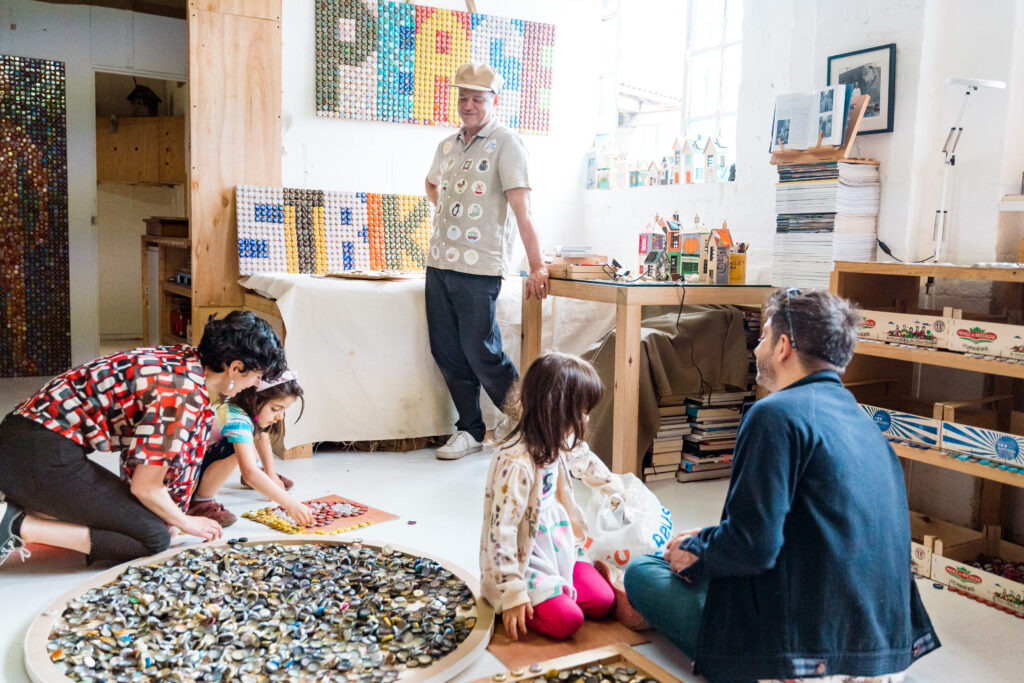
- This event has passed.
#FirstThursdays Late Opening: Irregular Commas – reading group with UEL Centre of Creative and Cultural Practice
Thursday 2nd February 2023 , 5:00pm to 6:30pm
Join UEL’s Centre of Creative and Cultural Practice for Irregular Commas – a regular reading group hosted in the Nunnery Café, led by a different artist and theorist each time, who will select a text for discussion. Each text will be made available to attendees in advance, either digitally or for collection from the Nunnery Café.

For this iteration of Irregular Commas, we will be discussing An American Marriage by Tayari Jones (2019), which tells the story of Celestial and Roy, an African-American couple living in Atlanta, Georgia whose lives are turned upside down when Roy is wrongfully convicted of a crime he did not commit. The discussion will be facilitated by artist Zarah Hussain and artist and educator Andrew Brown.
Zarah Hussain’s artistic practice is a visual examination of how spirituality, technology, and art connect. Hussain integrates the pattern-making abilities of conventional mathematics with modern art across a variety of genres, including animation, sculpture, and painting.
Hussain selected An American Marriage as the text for this discussion “because it centres on an artist. It shows how creativity, the making of work, and establishing an art practice cannot be separated from your cultural context, race and class. The life of Celeste, one of the central characters, is changed completely by events over which she has no control. It’s a very good example of how your background has a profound impact on the artwork you make, how you make it, and how it is seen. The novel is also about the burden of race, how impossible it is to make art outside of it. In that, as in other ways, [the] choice of An American Marriage connects to the themes explored by the work shortlisted for Bow Art’s East London Art Prize.”
Andrew Brown is an artist and educator who uses digital, analogue, historic and alternative photographic processes alongside soundscapes, texts and artefacts to explore the impact on communities of rapid changes in the built and natural environment in east London.
More about Andrew Brown
Andrew Brown is an artist and educator based at SPACE Studios, Ilford. He uses digital, analogue, historic and alternative photographic processes alongside soundscapes, texts and artefacts to explore the impact on communities of rapid changes in the built and natural environment in east London. Recent commissions include UP projects, the Arts Council and SPACE/Aetreum and collaborative work with East London Textile Arts, River Roding Trust, Humorisk CIC and Thames Ward Community Project.
His work grows from a career in education. He taught in primary and secondary schools in Newham, Islington and Hackney before joining the Institute of Education (now a faculty of UCL) as a temporary contract teacher educator, and subsequently serving as Professor, Dean, Pro-Director and Interim Director. He has a PhD in Sociology and academic and practical interest in lifelong learning, countering social inequality and building community research capability. He is Emeritus Professor of Education and Society at UCL and Honorary Professor in the Centre of Excellence for Equity in Higher Education at the University of Newcastle, NSW.
Andrew is currently studying for a Doctorate in Fine Art at UEL, exploring plurality in the arts and collaborative interdisciplinary research and practice.
More about Zarah Hussain
Zarah Hussain (b.1980) is a British artist. Her practice is a visual examination of how spirituality, technology, and art connect. Hussain integrates the pattern-making abilities of conventional mathematics with modern art across a variety of genres, including animation, sculpture, and painting. Hussain has established a creative language that reflects both the aesthetic traditions of traditional Islamic design and modern Western society. She combines mathematical art references such as geometric structures and tessellating patterns with inspiration from the work of 20th-century artists such as Victor Vasarely, Josef Albers, Mark Rothko, Agnes Martin, and Bridget Riley.
Hussain has exhibited across Europe, the USA and the MENASA region, including at the William Morris Gallery, London; the Barbican Center, London, the Sharjah Museum and the Peabody Essex Museum in Salem, Massachusetts.
Her work is held in many national and international collections, she was awarded the Lumen Prize (People’s Choice) in 2017. Hussain earned her MA in Islamic Art from the Prince’s School. She lives and works in London.
Access information
The Nunnery Café has step-free access throughout from street level, including to the accessible toilet, and is service animal friendly. This venue does not have a hearing loop system.
Accessible parking is not available on-site but blue badge parking can be found 500m away on Fairfield Road.
If you have any questions regarding accessibility at this venue or event, would like to make us aware of any access requirements that you have in advance of visiting, or would like this information in an alternate format including Easy Read, please email nunnery@bowarts.com or call 020 8980 7774 (Ext. 3)
Transport Information
Opening hours: Mon-Sat, 9am to 4pm; Sundays 10am to 4pm
Address: Nunnery Café, 181 Bow Road, London, E3 2SJ
Nearest station(s): Bow Road (District and Hammersmith and City lines) is a 6-minute walk away, and Bow Church (DLR) is a 3-minute walk away.
Bus: 205, 25, 425, A8, D8, 108, 276, 488 and 8 all service the surrounding area.
Bike: Bicycle parking is located at Bow Church Station. The nearest Santander Cycles docking station is at Bow Church Station.


